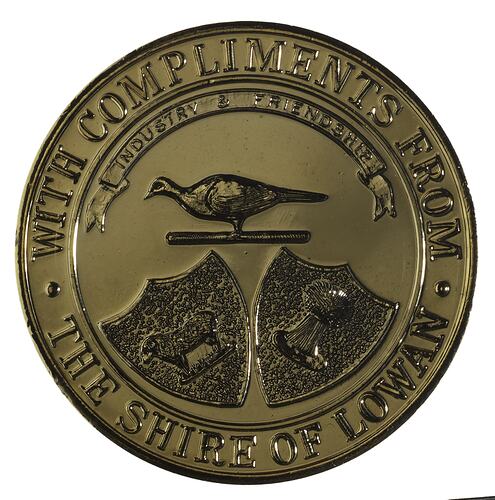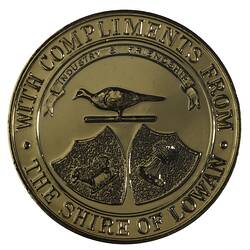The Shire of Lowan was situated in the wheat belt of north-west Victoria, centered on the town of Dimboola. Its name derived from an Aboriginal word for a mallee hen.
The land was occupied by the Wotjobaluk people prior to white settlement. It was estimated that there were some 1200 Aborigines in the area in 1852; an 1877 census recorded 103 survivors, many of them at Ebenezer mission.
Europeans initially knew this area as 'Nine Creeks', owing to the tributaries of the Wimmera River. In 1846 Horatio Ellerman and George Shaw established the first station. By 1859 a crude bush village called 'Nine Creeks' developed to serve the needs of the local squatters. It soon included a school hut, church, grog shanty and store. A survey was conducted in 1862 and the town was gazetted and proclaimed in 1863. It was named 'Dimboola' after a Singhalese word meaning 'land of figs', reflecting the surveyor's travels to Sri Lanka (then Ceylon). By 1868 there was a police constable in residence and a butcher's shop.
Selectors began to take up land as of 1873, the majority Germans moving from South Australia; the community also included Irish and Scots people. The agricultural emphasis shifted from grazing to wheat-cultivation. A state school opened in 1875.
The Shire of Lowan was established on 31 December 1875. The first meeting of the shire council in its new hall at Dimboola was conducted on 5 April 1877. The hall and offices was designed by shire engineer A. A. Surplice and built by Horsham contractor Richard Spry (junior) using Horsham bricks, iron roof and extensive internal timber ceilings. Two years later a local newspaper went into print. New residents continued to arrive, including a growing Chinese community that largely worked market gardens.
In 1882 the arrival of the railway meant increased economic and social activity in the Shire. A eucalyptus oil distillery was established in 1882 and salt was refined from the lake near Lochiel. Local productivity was also enhanced in the early 1880s by agricultural machinery especially tailored to dealing with the recalcitrant Mallee scrub: the stump-jump plough and the mallee. In 1885 a separate Shire of Dimboola was created.
In 1985 the Shire of Lowan issued a medal to commemorate the Sesquicentenary of Victoria (NU 20705).
On 20 January 1995 the Shires of Lowan and Dimboola united to become the Hindmarsh Shire Council. Hindmarsh in the early 21st century is home to the Lowan Bird or Mallee Fowl and producer of 90% of Victoria's ducks. The region also produced over 10% of the State's grain and oilseeds, including wheat, oats, barley and wool.
References:
Hindmarsh Shire Council website http://www.hindmarsh.vic.gov.au/index.cfm, accessed 23/01/2004.
Blake, L. (1977). Place Names of Victoria.
Australian Heritage Commission website http://www.ahc.gov.au, accessed 23/01/2004.
More Information
-
Keywords
-
Localities
-
Authors
-
Article types

